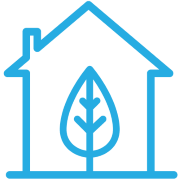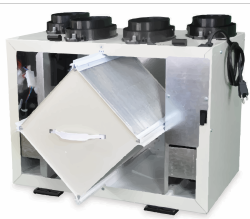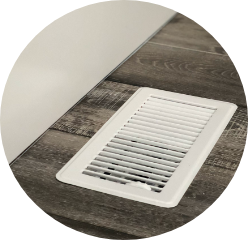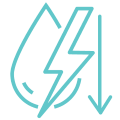
Choose ENERGY STAR® to save your money
An ENERGY STAR certified heat/energy recovery ventilator (HRV/ERV) uses less energy, on average, than a standard model.
Benefits of ENERGY STAR certified heat recovery ventilators

Make your home healthier

Replaces stale indoor air with fresh outdoor air

Get rid of many pollutants

All ENERGY STAR certified products are tested to meet strict efficiency specifications and are certified by an independent third party. They perform the same as or better than standard products without compromising performance in any way.

What is a heat recovery ventilator?
A heat recovery ventilator (HRV) is a ventilation device that helps make your home healthier, cleaner, and more comfortable by continuously replacing stale indoor air with fresh outdoor air. New homes built since 1977 are more airtight, which helps save energy but can make the inside air stale. To complement this airtightness, modern homes use HRVs to distribute fresh air throughout the house.

Recovering the heat: During the heating season, the HRV captures heat from the stale air leaving your house, and uses it to preheat the fresh air coming into your house. Similarly, an HRV can reverse this process during the cooling season, removing some of the heat from the incoming air and transferring it to the outgoing air.

Goodbye pollutants: Not only does an HRV bring in fresh air, but it will also get rid of many of the pollutants in your home like excess moisture and moulds, household chemicals and bacteria.
What is an energy recovery ventilator?
Energy recovery ventilators (ERVs) are a type of HRV that can exchange both heat and moisture.

Moisture control: An ERV can give you more control over moisture levels in your home during warm and humid weather, by keeping excess moisture out of your home. Because less energy is required to lower the temperature of dry air compared to moist air, an ERV can reduce the work your air conditioner needs to do and save you money.
Moisture recovery: If your winter climate is extremely dry, ERVs recover some of the moisture that would leave your house through a regular HRV. This helps you maintain a comfortable humidity level within your home, avoiding static electricity, sore throats and other discomforts caused by air that is too dry.
Tips for maintaining your HRV/ERV
- Never turn your HRV/ERV off (other than for servicing), it should always be running.
- Arrange for annual servicing by an accredited contractor. If possible, have your furnace and HRV/ERV serviced at the same time. This will reduce the inconvenience and cost of two service visits.
- Clean your unit regularly, including the air filters every 1-3 months
- Consult your owner’s manual for detailed instructions
- Start your research using the searchable product list to find and compare ENERGY STAR certified heat/energy recovery ventilators.
- Check disqualified heat/energy recovery ventilator models that no longer meet ENERGY STAR program technical requirements.
Why should you choose ENERGY STAR?

Reduce your energy consumption

Save money

Keep your home comfortable

Reduce your carbon footprint
Find out more about ENERGY STAR certified products
The ENERGY STAR name and symbol are trademarks registered in Canada by the United States Environmental Protection Agency and are administered and promoted by Natural Resources Canada.